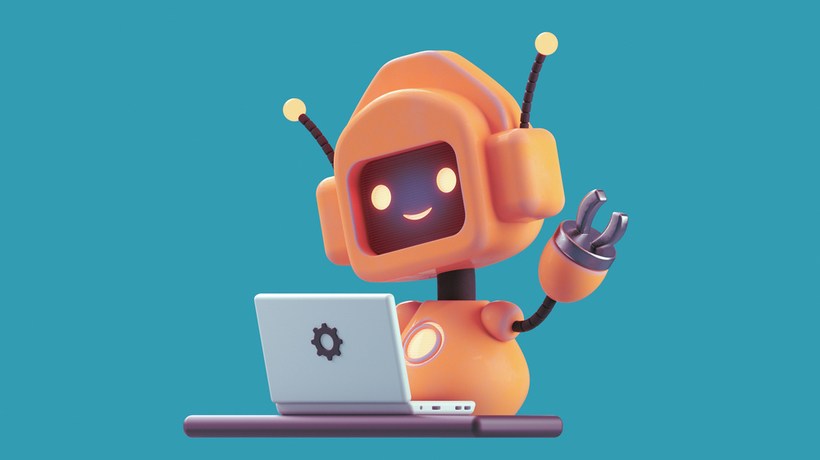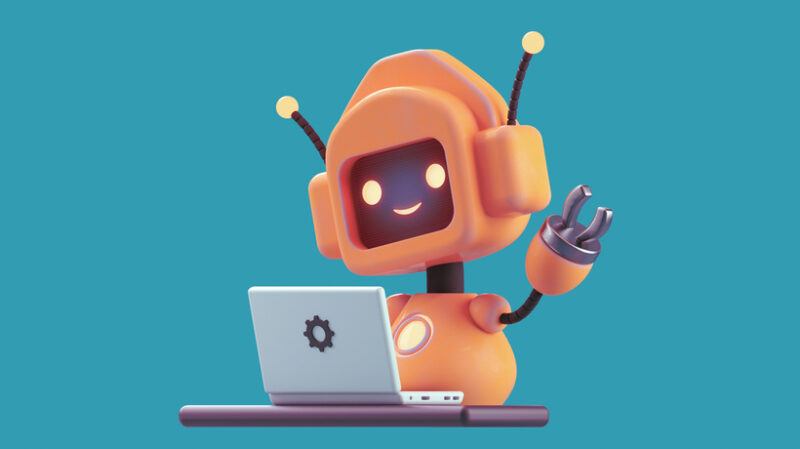
How To Build A Chatbot For Students That They Will Definitely Use

The Awful Truth About Chatbots
Probably, there is no messaging channel or industry that has never tried chatbots. They are everywhere, and their usage is only expected to rise. By 2026 the total number of chatbot messaging apps globally will grow by 169%, from 3.5 billion to 9.5 billion. What is the cause of their popularity?
Chatbots have many advantages that allow businesses to reach their business goals with minimal effort. However, as magical as that sounds, there is one negative side that chatbot providers don’t like to share in their demo presentations: 73% of customers who have a negative chatbot experience do not use that chatbot again.
Yes, this is the awful truth. Some think that to avoid this negative outcome, the solution is to fill a chatbot with the most modern AI technologies, making it so smart that people might even doubt their own intelligence. This is a wrong strategy, as the Customer Experience report found out, because “if chatbots are too smart, they are perceived as overconfident or arrogant, and that will be off-putting to users.”
So what can we do? Researchers advise companies to make chatbots more appealing by portraying them as friendly. This makes people more likely to interact with them. The level of friendliness that is required can be very different, depending on whether it’s the healthcare industry with serious genetic companies or the travel industry with creative start-ups, and the eLearning industry is no exception.
As we know, a chatbot is a computer program that simulates a natural human conversation. You can communicate with them using voice commands or text messaging. They interpret and process a user’s words or phrases and then give an instant preset answer using machine learning, or natural language processing (NLP), meaning AI.
Thus the focus should be not on the technology part, but on how a chatbot responds or behaves. Both are ruled by two things: chatbot persona and personality. During the development process, conversational designers are responsible for creating a chatbot persona and personality, as well as for designing the whole User Experience (UX) with an automated conversational interface. As a final result, businesses will receive something more than the simple, “Hello, how can I help you?”
Chatbot Persona
A persona is like a fictional character in literature or a buyer persona in marketing. It has some attributes that define its appearance, but like the two examples mentioned, the main reason for a chatbot persona is to make people empathize with it. In literature, characters are what keep readers finishing novels; in marketing, a buyer persona helps marketers understand that behind their products stand real people; and in chatbot design, creating the right persona will encourage users to choose this channel over other possible options of communication with your business. Usually, conversational designers do deep customer, market, and company research, because the creation of a chatbot persona is based on these three components: its purpose, the future users, and the company’s brand.
Chatbot Purpose
The goal of a chatbot should be defined not just for the creation of a persona, but as the first step that influences the areas you want to support or cover with a chatbot, whether it is lead generation, customer service and support, customer onboarding, or engagement. The right approach is to take a few cases that are currently weak points in that area, are repetitive, or where you lack human resources. Besides, think about what user information you need to solve problems, like contact information (emails, phone numbers), account information (login name), or personal information (name, location, preferences).
For example, let’s say that a chatbot helps with providing answers on administrative topics, like deadlines of a particular course, enrollment, homework, etc. What is its role here? Probably, it is that of a responsible teacher’s assistant. Having this in mind, you can develop the persona to be that of a young person who is always there to help you, who is responsible and notifies you about upcoming changes and course news. You can highlight that with a UX design, making a chatbot persona who is wearing glasses or handling a journal in their hands.
Future Users
Considering users will not only benefit your chatbot creation process but also your customers. Reflecting on things like your future users’ typical age, location, gender, hobbies, how they will use your chatbot, previous behavior with your channels, website, products, or services—all of these assist in creating someone from whom your customers will probably accept advice and help.
Example
Let’s consider an app that helps all 8–12th graders with the admissions process. The chatbot’s goal is to help future high school grads prepare for college. It gives advice, tips, and tricks on college selection, entrance fees, financial aid, applications, tests, etc. If you look at the question it asks, you’ll notice that there are no full stops at the end of the sentences and that it uses lots of jokes, emojis, and even gifs: “Bello! Me help u? I’m here for you ???? Hey, Got any (questions) grapes?” Is this perfect for future high school grads? Yes, and even more—the chatbot interacts with them like it is one of them, so it feels natural and easy for them to talk with a chatbot that speaks the way they do.
What are your customer segments, and which ones will interact with a chatbot? There is a possibility that you can have different customer segments and you want one chatbot for all of them. In that case, the possible approach is to consider the things that unite your customers in one big group, like the reasons for which they will use the chatbot, and how you want them to feel when interacting with it.
Company Brand
A factor that also plays a crucial role in chatbot persona creation is everything that makes your business a brand, including tone of voice, imagery, values, uniqueness, positioning, and mission. What makes your company stand out from others? Use the brand equity model to reflect on what is unique about your product, service, and company [1].
Now that you have finalized your chatbot persona, you have to think about how it will interact and communicate with users or what its chatbot personality will be. Sometimes people think that these two are the same thing, but they’re not. For example, you can have a chatbot persona described as “a green owl with big eyes” (from Duolingo). However, the personality of this chatbot can differ. The green owl can be serious, smart, helpful or funny, or outgoing. Usually, conversational designers define the personality through the lens of the five-factor model (FFM) or the big five: extraversion, agreeableness, openness, conscientiousness, and neuroticism [2]. However, to simplify the process you can choose the levels of each of the criteria below:
- Cheerful—serious
- Spontaneous—cautious
- Inquisitive—matter of fact
- Witty—dry
- Forthright—subtle
- Casual—formal
- Realistic—idealistic
- Affordable—high-end
The chatbot personality affects how your chatbot will greet (hello, hi!, etc.), explain errors (sorry, I don’t understand, etc.), finish conversations (goodbye, see you soon!, etc.), or help users achieve their goals. Sure, developing fun and appealing chatbots is only one step of the development journey. The second step is actually helping users and not overpromising on what it can deliver; otherwise, people are likely to be less forgiving of chatbot mistakes. But if you already have a chatbot and wonder how to make people use it more, then the chatbot persona and personality are probably what you want to pay attention to.
References:
Stay connected with us on social media platform for instant update click here to join our Twitter, & Facebook
We are now on Telegram. Click here to join our channel (@TechiUpdate) and stay updated with the latest Technology headlines.
For all the latest Education News Click Here
For the latest news and updates, follow us on Google News.

